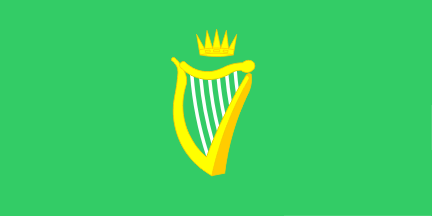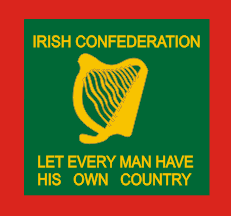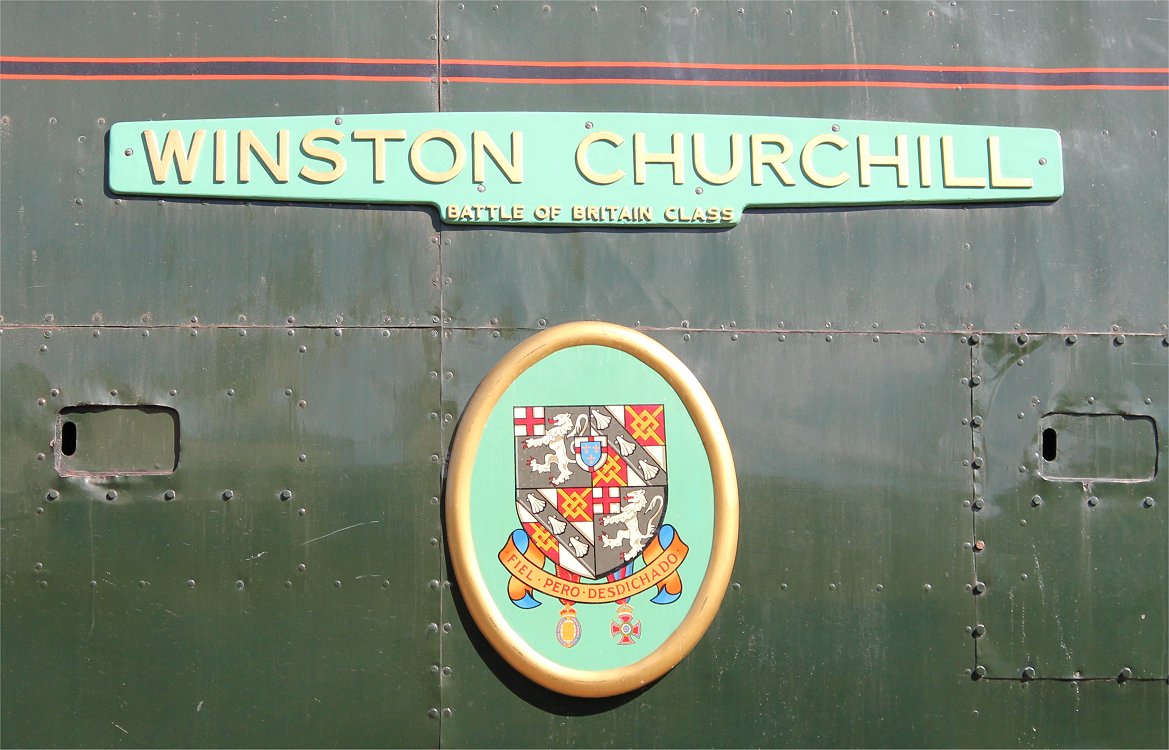This post looks in brief at the national flags of Ireland used in the 19th and early 20th Centuries. Following the rising of 1798, the parliaments of Ireland and Great Britain were united. The Kingdom of Ireland, ceased to exist and the island was now part of the United Kingdom of Great Britain and Ireland. Officially the national flag of Ireland was like the rest of the UK the Union Flag (or Union Jack) now with a St Patrick's Saltire representing the Irish part of the Union. However for many the spirit of the rebellion was still fresh in their mind, and the green flag with a gold harp, the flag used by the rebels, was used as a defacto Irish flag. This "Irish Jack" continued to be used by some Irish people as their flag at home and abroad, and only ceased to be the prime flag after the Easter Rising of 1916. The first picture of this post is of the LÉ Róisin docked in Londonderry last year. I took this picture when the ship along with HMS Severn visited the city as part of its annual maritime festival. This picture is particularly interesting as the Róisin is flying the two flags this post is about. The green harp flag, which is the Naval Jack of the Irish Defence Forces, and the Union Jack, which is in the role of a courtesy flag as Derry is a Northern Ireland city (although according to Queen's Regulations, the white ensign is the correct courtesy flag for a warship visiting the UK). A rather rare occasion when both flags were seen alongside each other.
The Union Jack
 |
| Original Union Flag of James I combining the English & Scottish banners |
The original Union Flag combines the Cross of St George with that of St Andrew and was introduced in 1606 by King James I/VI to be used on Scottish and English (and by extension Irish) ships, following the union of the crowns. However it was a maritime flag and rarely used on land. It is probably the maritime use of the flag that the information board is mistaken about.
.svg/2000px-Flag_of_the_Commonwealth_(1658-1660).svg.png) |
| Protectorate Jack 1658-1660, with Irish harp in centre |
As already mentioned in part 8 the Union Jack was used by Irish regiments both regulars and militia, throughout the 18th Century.
 |
| The Union Flag of 1801, with the addition of St Patrick's Saltire, the current UK flag |
It should be noted that while Irishmen and women took the green flag with them all over the world, they also helped take the Union Jack to all corners of the world. A good example is when British sovereignty was re-established on the Falkland Islands in 1833, it was an Irishman, William Dickson who was appointed as the permanent British representative. Dickson who was of Irish origin came to the islands from Argentina, and was provided with a flag and flag pole, and given the duty of flying the British flag from the flag pole, whenever a ship was in harbour.
 |
| George IV entering Dublin |
| Standard of Lord Lieutenant of Ireland 1801-1921 |
 |
| Flag of the Governor of Northern Ireland 1922-73 |
The ordinary Union Jack continued to be used as the national flag in Ulster, as Northern Ireland remained a constitutional part of the United Kingdom after 1921, and remains so to this day. The Union Jack like most flags in NI is often seen and used as a party emblem, or Unionist symbol as well as the national flag. It is often among the "unauthorised" flags used to "mark territory" by being flown from street furniture. The Union Jack in the Northern Ireland context has been in the media glare recently, due to the Protests of 2013 and 2014. This was as a result of Belfast City Council restricting the number of days it flies the flag, on public buildings including city hall. Many people responded to this with mass protests, not just in Belfast but all over the province. It was seen as the "last straw" in what many saw was the slowly but steady, one small step at a time attempt to eradicate their culture, identity and any symbol of NI being part of the UK, It should be said however that while the demonstrations that turned violent were broadcast all over the world, the majority although perhaps disruptive were peaceful.
 |
| Union Flag Protest in Derry 2013 |
Community relations haven't been the same since 2012. The fact that some councils in NI fly the flag daily, others on designated days and some don't use it at all, is a sad reflection on the lack of constructive, progressive and open flag strategy in N.Ireland.
The most recent controversy is that the flag will not appear on NI driving license but will appear on those of England, Scotland and Wales.
The Union Jack is the only official national flag of Northern Ireland
The Union Jack is the only official national flag of Northern Ireland
For more on the national flag of the United Kingdom click here.
The "Irish Jack"
 |
| Jack of the Irish Defence Forces' Naval Service |
After 1642 this flag seems to have practically disappeared. Although many of the Volunteer flags some of them green, featured harps as their central badges, it is possibly these flags that inspired those of the United Irishmen rather than a continuation of 1641.
Following the Act of Union the green flags of all sorts were used by the followers of O'Connell seeking repeal of the Union, none more so than the green harp flag, but flags with political slogans were also popular. One flag at one of the "monster meetings" of 1843 featured the national device below which was the word "Independence." The harp was sometimes accompanied by an "antique" crown. Its important to note that many nationalist only wanted Ireland to regain its status as an independent kingdom, with its own parliament rather than an separate republic. This is reflected by the crown, many more radical flags dropped the crown and this became standard as time went on.
 |
| An Irish flag captured in South Africa in 1900 |
 Another flag that appeared in England at the same time was a green flag. This was borne by the Irish of London at a demonstration in 1848. It was a green flag with a red boarder. Above a harp was the inscription "Irish Confederation" and below it "Let every man have his own country." The club was part of the "Young Ireland" movement. This was one of many political harp flags borne at political meetings throughout the 1840s. When the Dublin Young Ireland movement attempted an uprising, they were led to their rendezvous by a flag and fife and drums. This uprising was little more than a skirmish with the police, and failed to capture the imagination of the Irish people as such very few flags apart from the ones mentioned are known to be associated with it. It should also be noted that the Irish Police the soon to be Royal Irish Constabulary wore green, this was recognised by the Young Ireland leader, Meager who when addressing a rally a few days before this uprising said he was glad to see many of his brother Irishmen listening to him wearing green, he was of course talking about the officers of the Irish Constabulary. Although the green uniforms were based on those of the British Army's Rifle regiments this note suggests that many Irishmen saw the police uniform colour as significant. Unfortunately the police of the Republic of Ireland An Garda Síochána (literally translating to Guardians of the Peace) decided to adopt a blue uniform rather than continue the green uniforms of their predecessors. This tradition was carried on by the Royal Ulster Constabulary, and green continues to be worn by the Police Service of Northern Ireland.
Another flag that appeared in England at the same time was a green flag. This was borne by the Irish of London at a demonstration in 1848. It was a green flag with a red boarder. Above a harp was the inscription "Irish Confederation" and below it "Let every man have his own country." The club was part of the "Young Ireland" movement. This was one of many political harp flags borne at political meetings throughout the 1840s. When the Dublin Young Ireland movement attempted an uprising, they were led to their rendezvous by a flag and fife and drums. This uprising was little more than a skirmish with the police, and failed to capture the imagination of the Irish people as such very few flags apart from the ones mentioned are known to be associated with it. It should also be noted that the Irish Police the soon to be Royal Irish Constabulary wore green, this was recognised by the Young Ireland leader, Meager who when addressing a rally a few days before this uprising said he was glad to see many of his brother Irishmen listening to him wearing green, he was of course talking about the officers of the Irish Constabulary. Although the green uniforms were based on those of the British Army's Rifle regiments this note suggests that many Irishmen saw the police uniform colour as significant. Unfortunately the police of the Republic of Ireland An Garda Síochána (literally translating to Guardians of the Peace) decided to adopt a blue uniform rather than continue the green uniforms of their predecessors. This tradition was carried on by the Royal Ulster Constabulary, and green continues to be worn by the Police Service of Northern Ireland. |
| Irish American greeting card |
 |
| Irish flag, according to the Library Atlas of Modern Geography 1892 |
However it was still not without its controversies.
In 1885 during the early days of the Home Rule debates, an effort was made to reignite the radicalism of the green harp flag. There was an appending visit to ireland by the Prince of Wales. The the Lord Mayor of Dublin who was a nationalist, said that the moment the Prince arrived on the island, he would take down the flag of Dublin, which had by custom flown over the Mayors residence when he was in residence. This insult offended the students of Trinity College who one night raided the Lord Mayor's garden and stole the flag! The Dublin flag was a heraldic banner of the city's coat of arms, three burning castles on a blue field.
 |
| Flag of the City of Dublin |
In 1906 during the Athens Olympics, Irishman Peter O'Conner, won silver in the long jump. He successfully objected to the raising of the Union Flag in his honour, and a green harp flag provided by some of his supporters was raised instead.
 The 16th (Irish) Division of the 1st World War petitioned to have an official divisional flag. This was a green harp flag with 16th(Irish) Division. This was declined on the grounds that flags were borne by battalions (regimental colours) and not divisions, however green harp flags were used by Irish troops in the Great War. There is a photograph of John Redmond presenting Irish Volunteers with one before they depart for the front. There is also a report of the Connaught Rangers marching behind one in Gallipoli. The story says that they had a green harp flag flying and the pipes and drums playing Killaloe, much to the delight of nearby French troops. A detachment of Foot Guards even presented arms mistaking the flag for a regimental colour!
The 16th (Irish) Division of the 1st World War petitioned to have an official divisional flag. This was a green harp flag with 16th(Irish) Division. This was declined on the grounds that flags were borne by battalions (regimental colours) and not divisions, however green harp flags were used by Irish troops in the Great War. There is a photograph of John Redmond presenting Irish Volunteers with one before they depart for the front. There is also a report of the Connaught Rangers marching behind one in Gallipoli. The story says that they had a green harp flag flying and the pipes and drums playing Killaloe, much to the delight of nearby French troops. A detachment of Foot Guards even presented arms mistaking the flag for a regimental colour!The acceptance of the green harp flag as the national emblem is demonstrated here, infact had the Easter Rising not happened it could well have been the modern flag of Ireland. The green harp flag was even used in recruitment posters for the army:
The last one is interesting as it places the Irish flag alongside other national flags including Britains which suggests Ireland is a separate entity to Great Britain, which seems odd for a British Army poster.
The green harp flag has even been the basis of the flags of Irish regiments. The flag of the Ulster Defence Regiment for example is a green harp flag with a central red stripe.
 |
| Flag of the Ulster Defence Regiment 1970-92 |
| The flag of Leinster |
It should be noted that these are attributed arms, there is no evidence of the 36th Division using them as divisional insignia (although they did appear to use a red hand on white shield), and were probably adopted after the war, for use by those who identified with the division and possibly veterans. It seems appropriate that I end the post here as I started it with the two emblems side by side.
For more in this series see the links below or click the label History of Irish flags:















